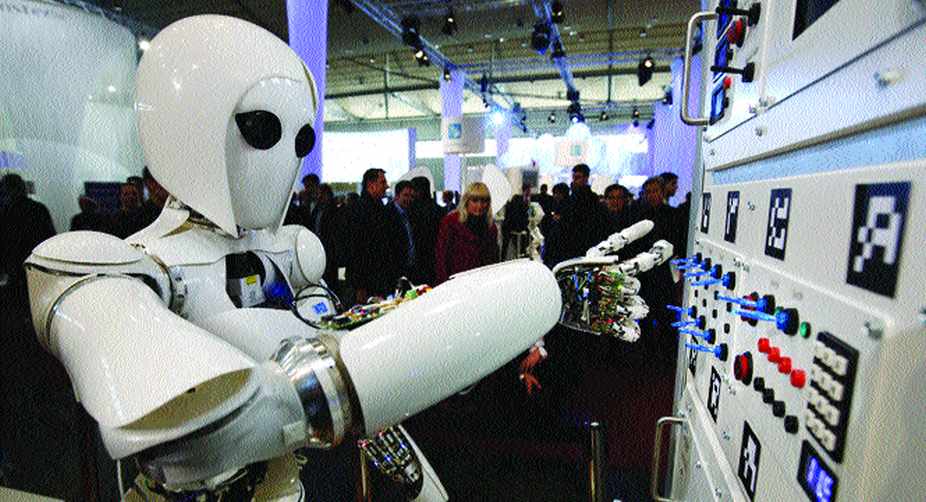Technology new strategic arena of competition, driving geo-political powerplay: Army Chief
The Army Chief said emergency procurement powers given by the Centre has helped the force to modernise itself.
The advent of technology in our lives has already facilitated various experiences, and now, the focus is on the en-hancement of those experiences.

The advent of technology in our lives has already facilitated various experiences, and now, the focus is on the en-hancement of those experiences. Artificial intelligence, the instillation of human intelligence in machines, is the result of one such enhancement, which has pervaded all aspects of our life that makes adaptive learning a possibility. This provides a computer-mediated personalised learning solution to learners according to their unique needs.
Artificial intelligence, an offshoot of computer science, exhibits intelligence, usually associated with human beings, to solve problems. AI did not require much time to move on from the screens of sci-fi movies to our daily lives. From making car parking easy to strengthening security surveillance, it has successfully built its credibility. However, technology has made its inroads into education only in the recent years. In the 90s, technology was considered a costly affair and although educators toyed with new teaching methodologies, application of technology in education was still at a nascent stage. Digital classrooms and books are just a decade old in India.
Adaptive learning enables the computer to present content and reading materials as per the need. Every learner has their own individual needs, which non-adaptive methods have failed to address. Every student needs special tutoring. However, human tutoring is a costly affair and is not as effective as computer tutoring. Alternatively termed as intelligent tutoring, adaptive learning rescues students from the dreaded situation, where teachers fail to recognise learning styles and requirements of learners. AI tailors the information it attains into a personalised learning experience for kids, thus facilitating adaptive learning.
Advertisement
Next Education is one of the first edu-tech companies in India as well as in the world to adopt the adaptive learning method for the K–12 sector. To gain a better understanding of this methodology, let us look into the pattern of GRE and GMAT exams. First, the aspirants are asked a mid-level question and based on their performance on this question; the computer modifies the difficulty level of the next question and the subsequent ones. The computer asks questions based on the estimated ability of the candidate. The pattern test adapts itself based on the responses. The Item Response Theory is used for subjects such as math and science, while the more complex Testlet Response Theory is used for English and social studies.
Adaptive learning maximises learning in the minimum time possible. For instance, one concept is connected to the other via pathways. A learner needs to choose a linear path in a traditional teaching methodology, but adaptive might allow them to skip a few concepts. As opposed to sequential learners, who gain understanding linearly, global learners gain understanding almost randomly, suddenly establishing the connection and understanding the details. However, there are certain concepts which cannot be skipped. For example, one cannot miss addition before understanding multiplication, but learners can tread parallel pathways in their learning process. Furthermore, besides jumping concepts, learners can also tread parallel pathways in their learning process.
There are multiple tools such as textbooks, self-learning videos, simulation videos, YouTube videos, and digital classroom solutions, which enable students to move from one concept to another. Our goal is to figure out the optimal tool for each student to move from one concept to another. With its self-learning ability, AI does the job for us, and suggests learners with the best tool based on their learning progress.
Clustering algorithms creates students’ profiles based on their learning styles and preferences. Richard Felder has grouped learning styles into four dimensions as visual and verbal, intuitive and sensing, sequential and global, and active and reflexive. Lighting, sound and time also influence one’s learning process and experience. While one might read better in the morning, the other might grasp concepts better in the afternoon.
Artificial intelligence can make the whole learning experience a lot more engaging for learners, as it is adjusted to an individual’s learning abilities. The process makes them aware of their learning habits, encourages meta-learning, and thus, facilitates a holistic development.
(THE WRITER IS CHIEF EXECUTIVE OFFICER AND CO-FOUNDER, NEXT EDUCATION INDIA PRIVATE LIMITED)
Advertisement